All reports
Multiple myeloma
·
Jan 30, 2025
Understanding multiple myeloma: a guide for patients
Causes, symptoms, stages, treatment options, and support resources
Reports are in beta and continually improving. They are not a substitute for professional medical advice. Please contact us to give feedback.
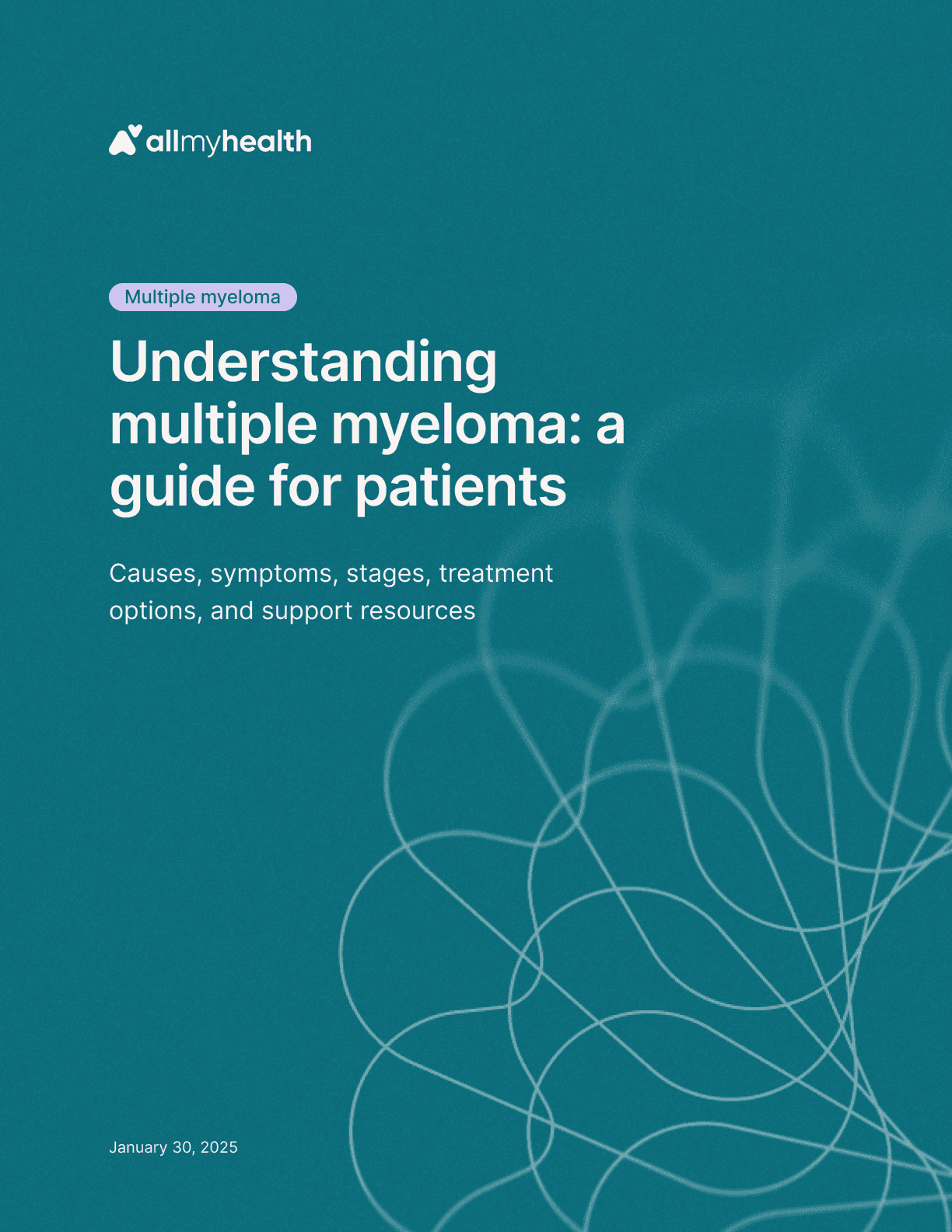
Stay informed
This report was published in our weekly newsletter and on our community page. Follow to stay up to date with the latest news and research relevant to your condition.
Listen to the audio version
Introduction
Multiple myeloma is a cancer that originates in plasma cells, which are white blood cells crucial to your immune system [1]. These cells normally produce antibodies that help your body fight off infections. However, in multiple myeloma, plasma cells become cancerous and multiply uncontrollably within the bone marrow, the soft, spongy tissue inside your bones where blood cells are made [2]. This overgrowth of abnormal plasma cells disrupts the production of healthy blood cells and can lead to various health issues [1]. This guide aims to provide a clear and compassionate understanding of multiple myeloma, breaking down complex medical terms and addressing sensitive topics with empathy.
What is Multiple Myeloma?
Multiple myeloma begins with a single plasma cell in the bone marrow that undergoes a malignant transformation [2]. This cancerous plasma cell multiplies rapidly, creating many copies of itself [3].Unlike healthy cells that have a set lifespan, these cancerous cells continue to live and accumulate, crowding out the healthy blood cells in the bone marrow [2]. This can lead to fatigue, weakness, and increased susceptibility to infections [2].
Furthermore, instead of producing antibodies to fight infection, these abnormal plasma cells produce an abnormal antibody called a monoclonal protein (or M protein) [3]. These M proteins don't function like normal antibodies and can cause various problems, such as kidney damage and thickening of the blood [3].
Multiple myeloma often starts as a condition called monoclonal gammopathy of undetermined significance (MGUS) [2]. In MGUS, abnormal plasma cells make copies of the same antibody (M protein), but they don't form tumors or cause any harm [4]. Most people with MGUS don't develop multiple myeloma, but it's essential to monitor the condition for any changes [4].
Multiple myeloma can also cause bone problems. The myeloma cells interfere with the normal process of bone renewal, leading to weakened bones and an increased risk of fractures [4]. This bone damage can also cause high levels of calcium in the blood, a condition called hypercalcemia [4].
Symptoms
It's important to be aware of the potential symptoms of multiple myeloma, which can include [2]:
Bone pain, especially in the spine, chest, or hips
Nausea
Constipation
Loss of appetite
Mental fogginess or confusion
Fatigue
Frequent infections
Weakness
Causes and Risk Factors
The exact cause of multiple myeloma is not yet fully understood [2].
However, certain factors may increase the risk of developing this disease, including:
Age: Multiple myeloma is most often diagnosed in people over 65 [2].
Sex: Men are slightly more likely to develop multiple myeloma than women [2].
Race: Multiple myeloma is more common in African Americans [5].
Family history: Having a close relative with multiple myeloma increases your risk [5].
MGUS: Having MGUS increases the risk of developing multiple myeloma [2].
It's important to remember that having one or more of these risk factors doesn't mean you'll definitely develop multiple myeloma. Many people with these risk factors never get the disease, while others develop it without having any known risk factors.
Stages and Types of Multiple Myeloma
Multiple myeloma is classified into different stages and types to help doctors understand the extent of the disease and guide treatment decisions.
Stages
There are two main staging systems for multiple myeloma:
Durie-Salmon Staging: This system has three stages (I, II, and III) based on factors like the number of myeloma cells, bone damage, M protein levels, and calcium levels [6].
International Staging System (ISS): This system uses blood test results, specifically albumin and beta-2 microglobulin levels, to classify myeloma into three stages [7].
Types
MGUS: This is a pre-cancerous condition where abnormal plasma cells are present, but they don't cause any harm [6].
Smoldering Myeloma: This is an early stage where the disease is present but not causing any symptoms [6]. Doctors try to predict when people with smoldering multiple myeloma will develop active multiple myeloma and classify them into different risk groups based on factors like the percentage of plasma cells in the bone marrow and M protein levels [8]. These risk groups help guide monitoring and treatment decisions.
Symptomatic Myeloma: This is when the disease is causing noticeable symptoms and requires treatment [6].
Treatment Options
While multiple myeloma is currently considered incurable, there are many effective treatments available to manage the disease, control symptoms, and improve your quality of life [9]. Your treatment plan will be individualized based on your unique circumstances, including the stage of your myeloma, your overall health, and your preferences [10].
Treatment options may include:
Chemotherapy: Uses drugs to kill cancer cells [10]. Common chemotherapy medications used for multiple myeloma include:
Thalidomide: This drug can help kill myeloma cells. Potential side effects include drowsiness, constipation, dizziness, rashes, and numbness or tingling in the hands and feet (peripheral neuropathy) [11].
Bortezomib (Velcade): This drug can help kill myeloma cells by causing protein to build up inside them. Possible side effects include tiredness, diarrhea, and peripheral neuropathy [11].
Targeted therapy: Uses drugs that target specific molecules in myeloma cells to stop their growth [12].
Immunotherapy: Helps your immune system fight cancer cells [12].
CAR T-cell therapy: A type of immunotherapy that modifies your T cells (a type of immune cell) to fight myeloma cells [12].
Stem cell transplant: This treatment replaces diseased bone marrow with healthy stem cells. There are two main types of stem cell transplants: [13]
Autologous stem cell transplant: This uses your own stem cells that were collected before high-dose chemotherapy.
Allogeneic stem cell transplant: This uses stem cells from a donor.
Radiation therapy: Uses high-energy rays to kill cancer cells [12].
Supportive care: Includes treatments to manage symptoms and complications, such as pain management, kidney support, and infection prevention [12].
Clinical Trials
Clinical trials are research studies that test new treatments and approaches to improve cancer care. Participating in a clinical trial can give you access to promising new therapies and contribute to advancing myeloma research [14]. Talk to your doctor about whether a clinical trial might be right for you.
Prognosis and End-of-Life Care
It's natural to have questions and concerns about your prognosis (outlook) and end-of-life care. These are sensitive topics, and it's important to approach them with open and honest communication with your healthcare team.
Prognosis
The prognosis for multiple myeloma varies depending on several factors, including the stage of the disease, your overall health, and the specific genetic characteristics of your myeloma cells [15]. While there is no cure for multiple myeloma, advancements in treatment have significantly improved the outlook for many patients [16]. Some people live for many years with multiple myeloma, managing it as a chronic condition.
End-of-Life Care
Facing a serious illness like multiple myeloma can bring about a range of emotions, including worry and uncertainty about the future. As the disease progresses, it's important to have open and honest conversations with your healthcare team and loved ones about your wishes for care.
End-of-life care for multiple myeloma focuses on providing comfort and support to patients and their families. It involves managing pain and other symptoms, as well as addressing potential complications like kidney failure and infections [9]. It also includes providing emotional and spiritual support to help patients and their families cope with the challenges of the disease.
Global Resources and Support Groups
Living with multiple myeloma can be challenging, but you don't have to go through it alone. There are many resources and support groups available worldwide to provide information, emotional support, and a sense of community.
International Myeloma Foundation (IMF)
Provides education, support, and advocacy for myeloma patients worldwide. Offers resources like treatment information, support groups, financial assistance programs, and educational events.
The MMRF (Multiple Myeloma Research Foundation)
Focuses on accelerating research and supporting myeloma patients. Provides educational resources, clinical trial information, and financial assistance.
Myeloma UK
Offers tailored information and support for myeloma patients in the UK.
Myeloma Canada
Provides resources and support for Canadian myeloma patients. Information is available in both English and French.
Myeloma Australia
Supports Australian myeloma patients with access to specialist nurses, educational resources, and support groups.
Common Acronyms
You may encounter various acronyms when learning about and discussing multiple myeloma. Here are some of the most common ones [21]:
ASCT: Autologous Stem Cell Transplant
BCMA: B-cell maturation antigen
BMB: Bone Marrow Biopsy
CAR-T: Chimeric antigen receptor T-cell therapy
CRAB: Calcium, Renal (kidney), Anemia, Bone (disease)
IFE: Immunofixation Electrophoresis
Ig: Immunoglobulin
ISS: International Staging System
MGUS: Monoclonal Gammopathy of Undetermined Significance
MMRF: Multiple Myeloma Research Foundation
MRD: Minimal Residual Disease
PFS: Progression-Free Survival
Conclusion
Multiple myeloma is a complex and challenging disease, but advancements in treatment and a growing understanding of the disease have led to significant improvements in prognosis and quality of life for many patients [9]. Early detection and individualized treatment plans are crucial for managing multiple myeloma effectively [10].
Remember that you are not alone on this journey. With the right information, support, and a proactive approach to your care, you can live well with multiple myeloma. Don't hesitate to:
Educate yourself about the disease and its treatment options.
Communicate openly with your healthcare team.
Seek emotional support from loved ones, support groups, or mental health professionals.
Focus on maintaining your quality of life.
This guide has provided you with a comprehensive overview of multiple myeloma, breaking down medical terms, discussing treatment options, and addressing sensitive topics with empathy. We hope this information empowers you to make informed decisions and live well with multiple myeloma.
References
Definition of multiple myeloma - NCI Dictionary of Cancer Terms - NCI. https://www.cancer.gov/publications/dictionaries/cancer-terms/def/multiple-myeloma
Multiple myeloma - Symptoms and causes - Mayo Clinic. https://www.mayoclinic.org/diseases-conditions/multiple-myeloma/symptoms-causes/syc-20353378
Multiple Myeloma - Symptoms & Causes - MD Anderson Cancer Center. https://www.mdanderson.org/cancer-types/multiple-myeloma.html
What Is Multiple Myeloma? | Plasma Cell Cancer. https://www.cancer.org/cancer/types/multiple-myeloma/about/what-is-multiple-myeloma.html
Multiple Myeloma Symptoms - MedlinePlus. https://medlineplus.gov/multiplemyeloma.html
Multiple myeloma stages and types | University of Iowa Health Care. https://uihc.org/health-topics/multiple-myeloma-stages-and-types
Stages of myeloma - Cancer Research UK. https://www.cancerresearchuk.org/about-cancer/myeloma/stages
Types of multiple myeloma | Canadian Cancer Society. https://cancer.ca/en/cancer-information/cancer-types/multiple-myeloma/what-is-multiple-myeloma/types-of-multiple-myeloma
Multiple Myeloma: Symptoms, What It Is, Prognosis & Treatment - Cleveland Clinic. https://my.clevelandclinic.org/health/diseases/6178-multiple-myeloma
Treatment for Multiple Myeloma | Fred Hutchinson Cancer Center. https://www.fredhutch.org/en/diseases/multiple-myeloma/treatment.html
Multiple myeloma - Treatment - NHS. https://www.nhs.uk/conditions/multiple-myeloma/treatment/
Multiple myeloma - Diagnosis and treatment - Mayo Clinic. https://www.mayoclinic.org/diseases-conditions/multiple-myeloma/diagnosis-treatment/drc-20353383
Multiple Myeloma Treatment | Penn Medicine. https://www.pennmedicine.org/cancer/types-of-cancer/multiple-myeloma/multiple-myeloma-treatment
Treatment options for myeloma | Cancer research UK. https://www.cancerresearchuk.org/about-cancer/myeloma/treatment/treatment-decisions
Survival for myeloma | Cancer research UK. https://www.cancerresearchuk.org/about-cancer/myeloma/survival
What Is the Prognosis of a Multiple Myeloma Patient? - HealthTree Foundation. https://healthtree.org/myeloma/community/articles/what-is-multiple-myeloma-prognosis
International Myeloma Foundation: Multiple Myeloma Information. https://www.myeloma.org/
International Myeloma Foundation (IMF) | Leukemia and Lymphoma Society. https://www.lls.org/partner/international-myeloma-foundation-imf
Multiple Myeloma Research Foundation: The MMRF. https://themmrf.org/
International Multiple Myeloma and Cancer Organization. https://www.myeloma.org/online-resources/international-organizations
Acronyms frequently used in multiple myeloma - HealthTree Foundation. https://healthtree.org/myeloma/community/acronyms-used-in-myeloma

Gaucher disease
·
Inclusion of Gaucher disease in newborn screening panels across the U.S.
Apr 9, 2025

Hemophilia
·
Qfitlia: A breakthrough in hemophilia treatment
Apr 3, 2025

Multiple myeloma
·
Navigating clinical trials in multiple myeloma
Apr 2, 2025

Gene and cell therapy
·
An introduction to cell therapy
Mar 25, 2025

Gene and cell therapy
·
An introduction to gene therapy
Mar 19, 2025
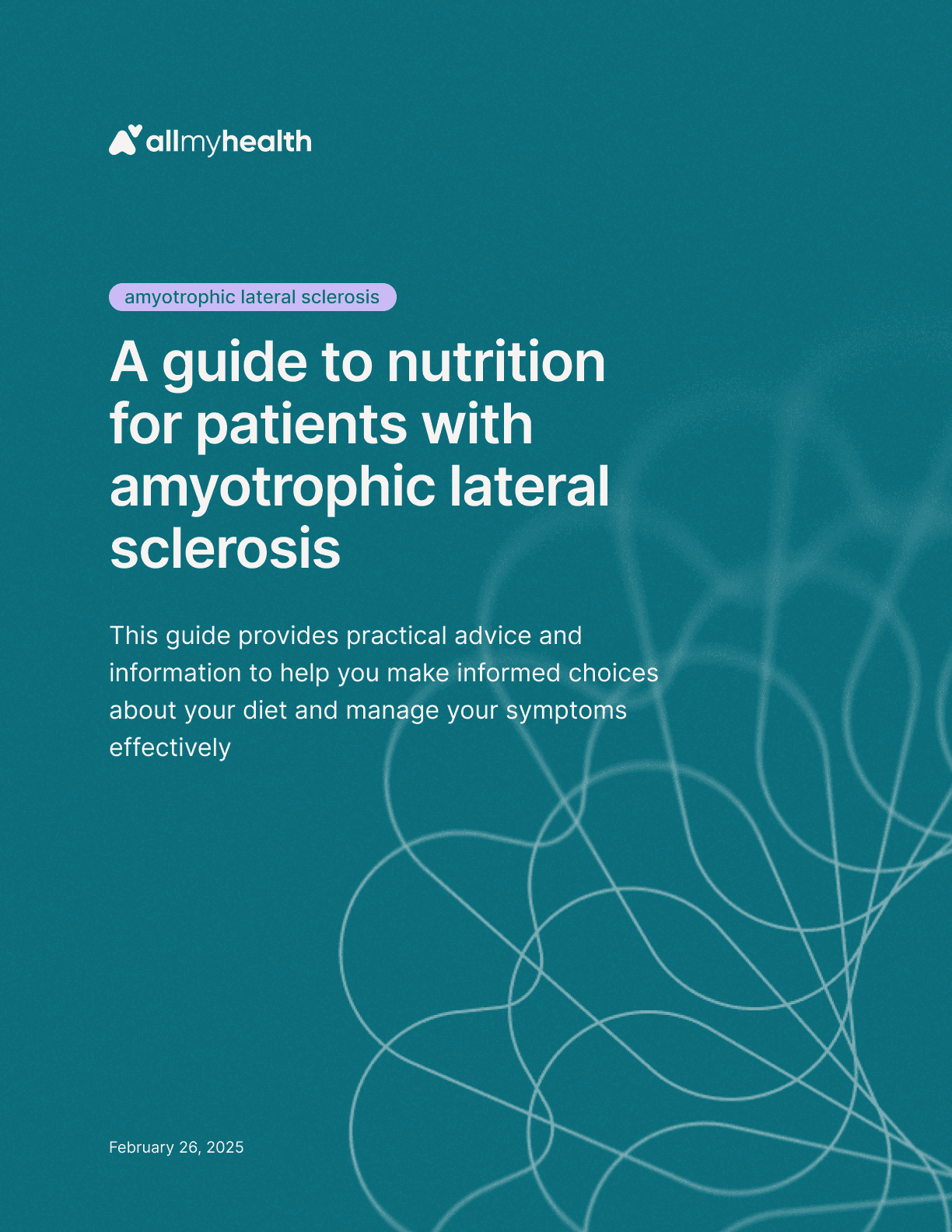
Amyotrophic lateral sclerosis
·
A guide to nutrition for patients with amyotrophic lateral sclerosis
Feb 26, 2025

Huntington's disease
·
A guide to nutrition for patients with Huntington's disease
Feb 26, 2025

Spinal muscular atrophy
·
A guide to nutrition for patients with spinal muscular atrophy
Feb 26, 2025
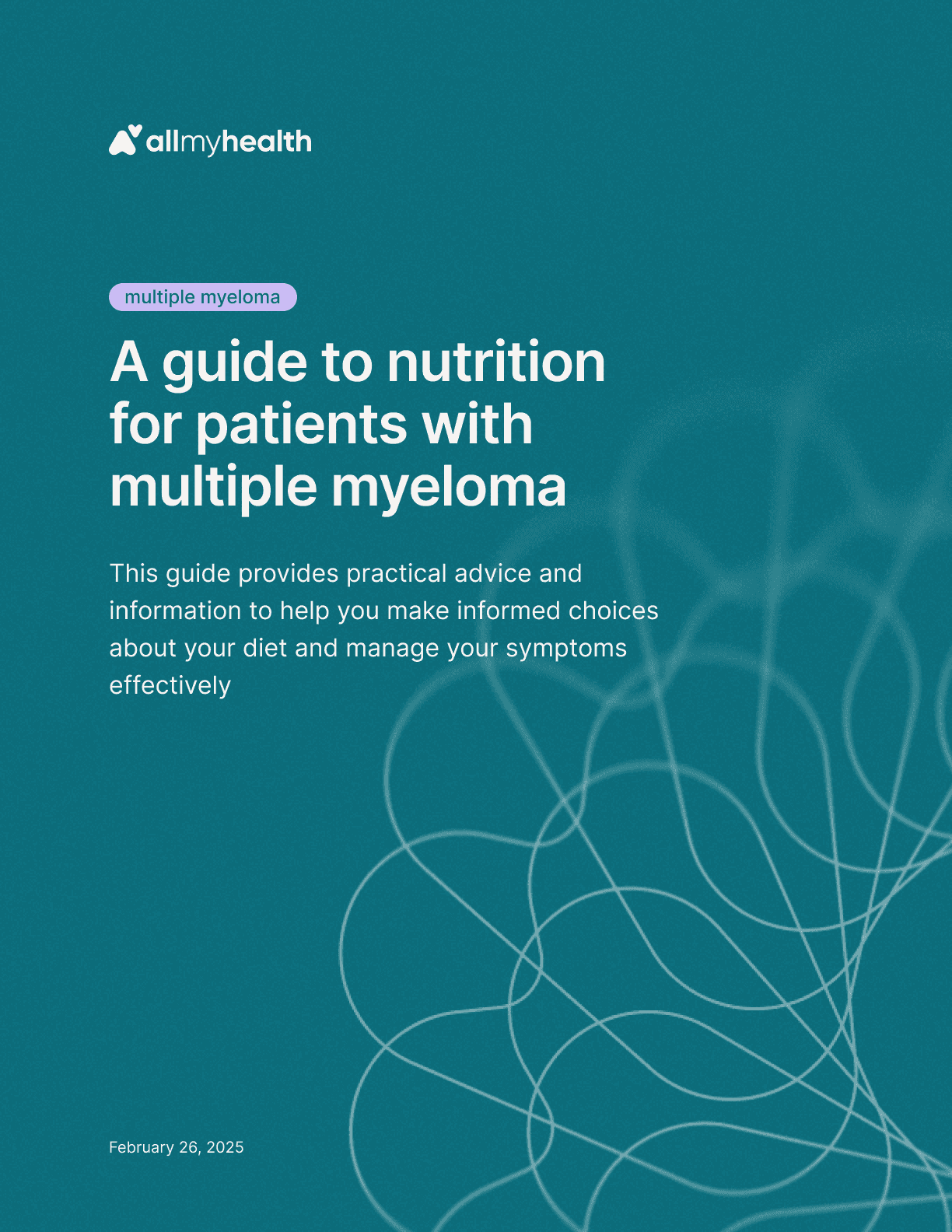
Multiple myeloma
·
A guide to nutrition for patients with multiple myeloma
Feb 26, 2025
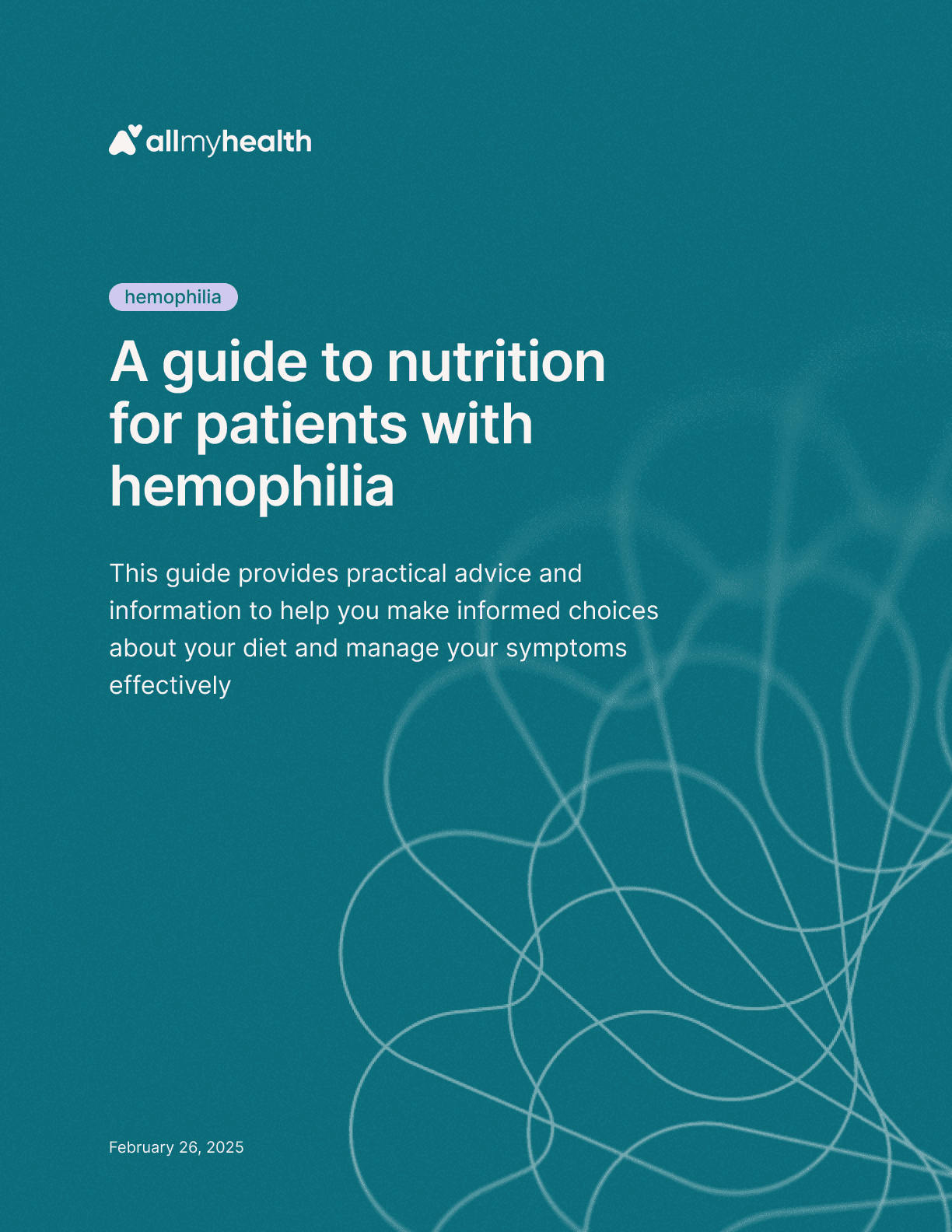
Hemophilia
·
A guide to nutrition for patients with hemophilia
Feb 26, 2025
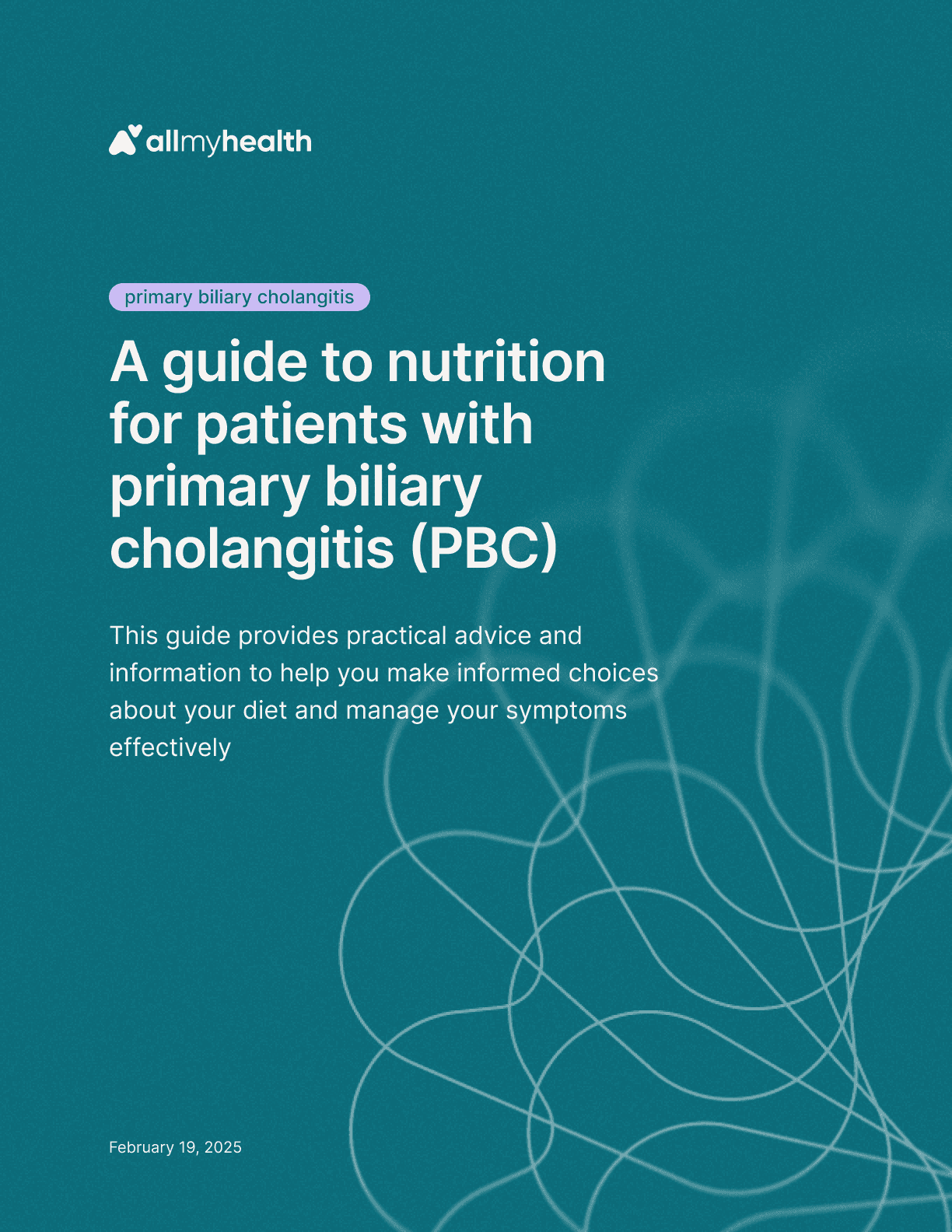
Primary biliary cholangitis
·
A guide to nutrition for patients with primary biliary cholangitis (PBC)
Feb 19, 2025

Duchenne muscular dystrophy
·
A guide to nutrition for patients with Duchenne muscular dystrophy
Feb 19, 2025

Friedreich's ataxia
·
A guide to nutrition for patients with Friedreich's ataxia
Feb 19, 2025
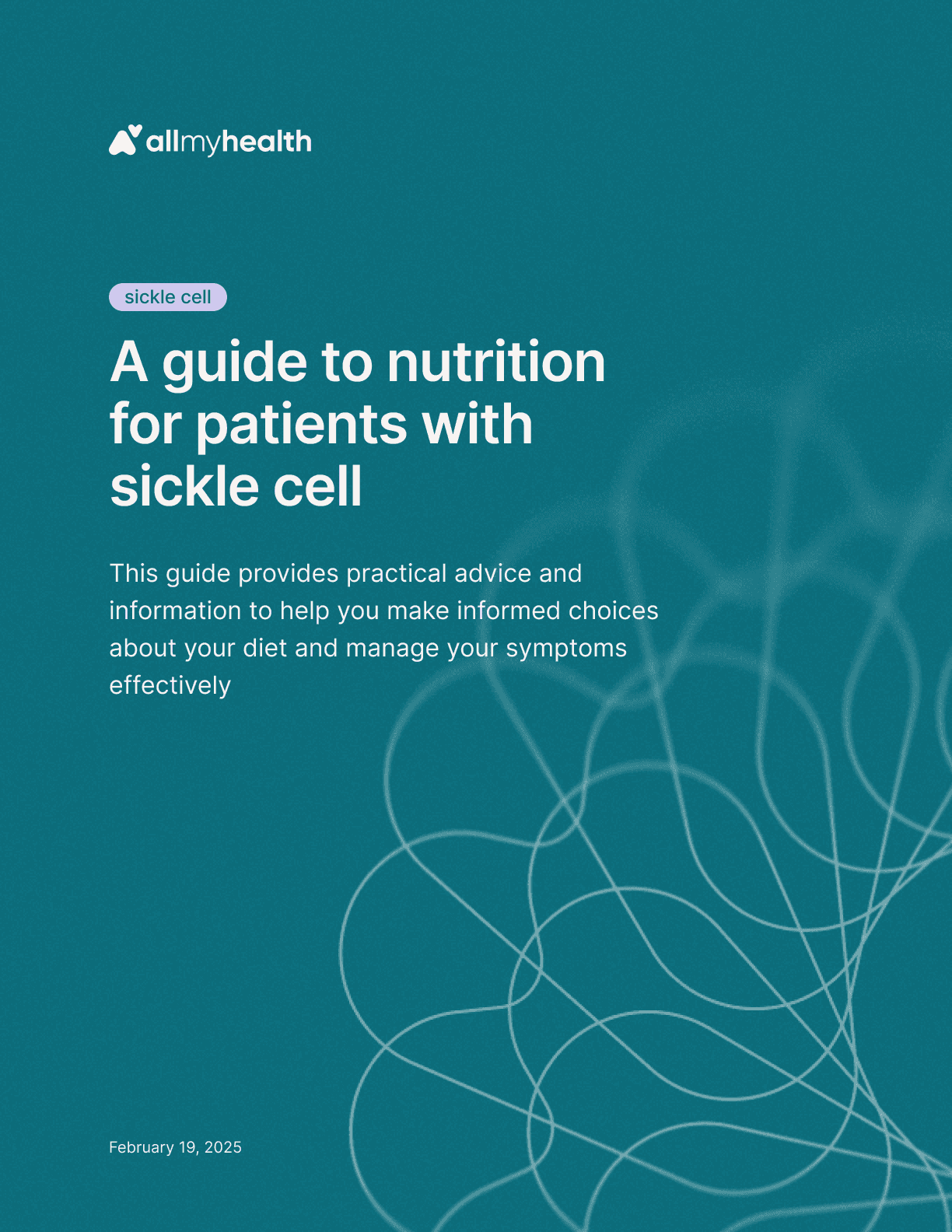
Sickle cell
·
A guide to nutrition for patients with sickle cell
Feb 19, 2025

Mantle cell lymphoma
·
A guide to nutrition for patients with mantle cell lymphoma
Feb 19, 2025
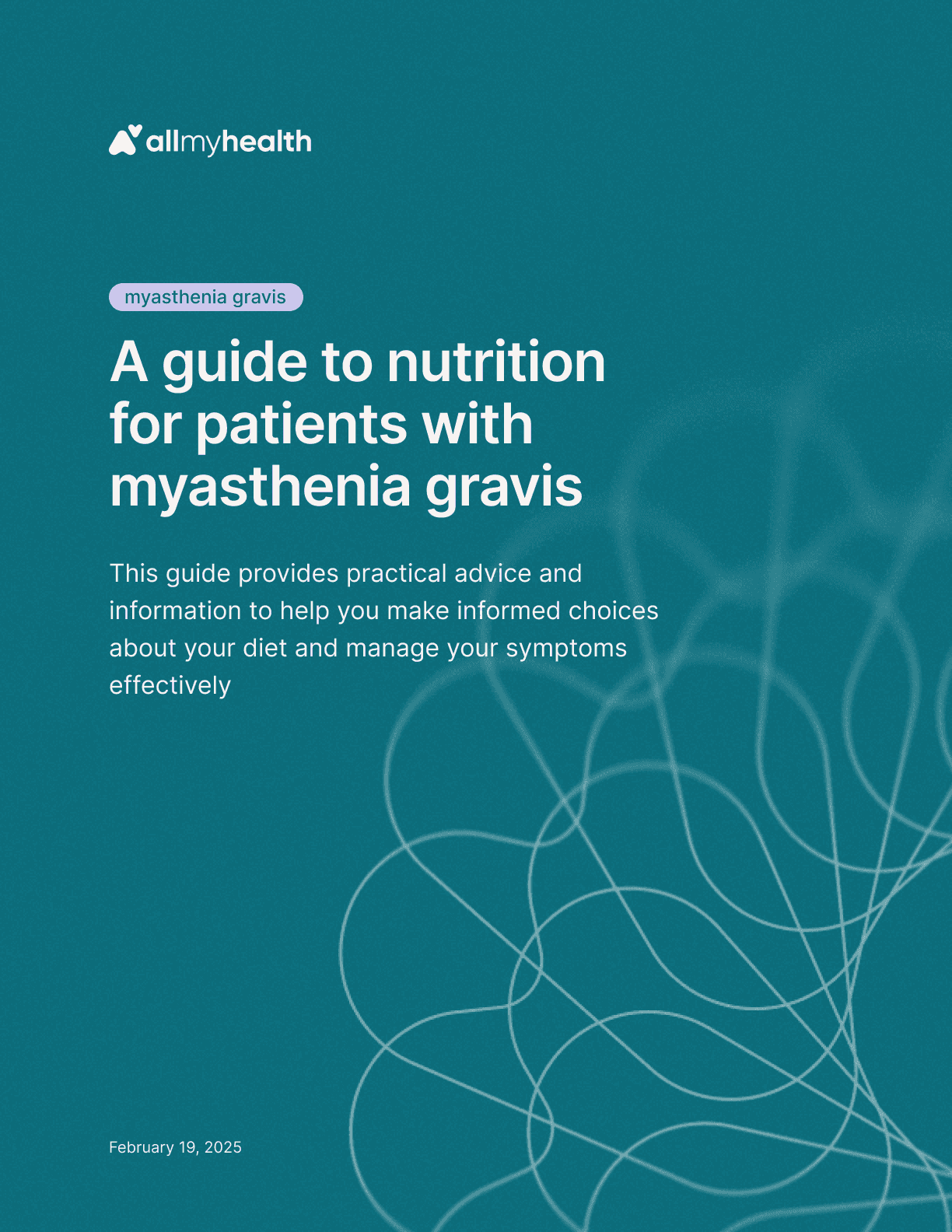
Myasthenia gravis
·
A guide to nutrition for patients with myasthenia gravis
Feb 19, 2025
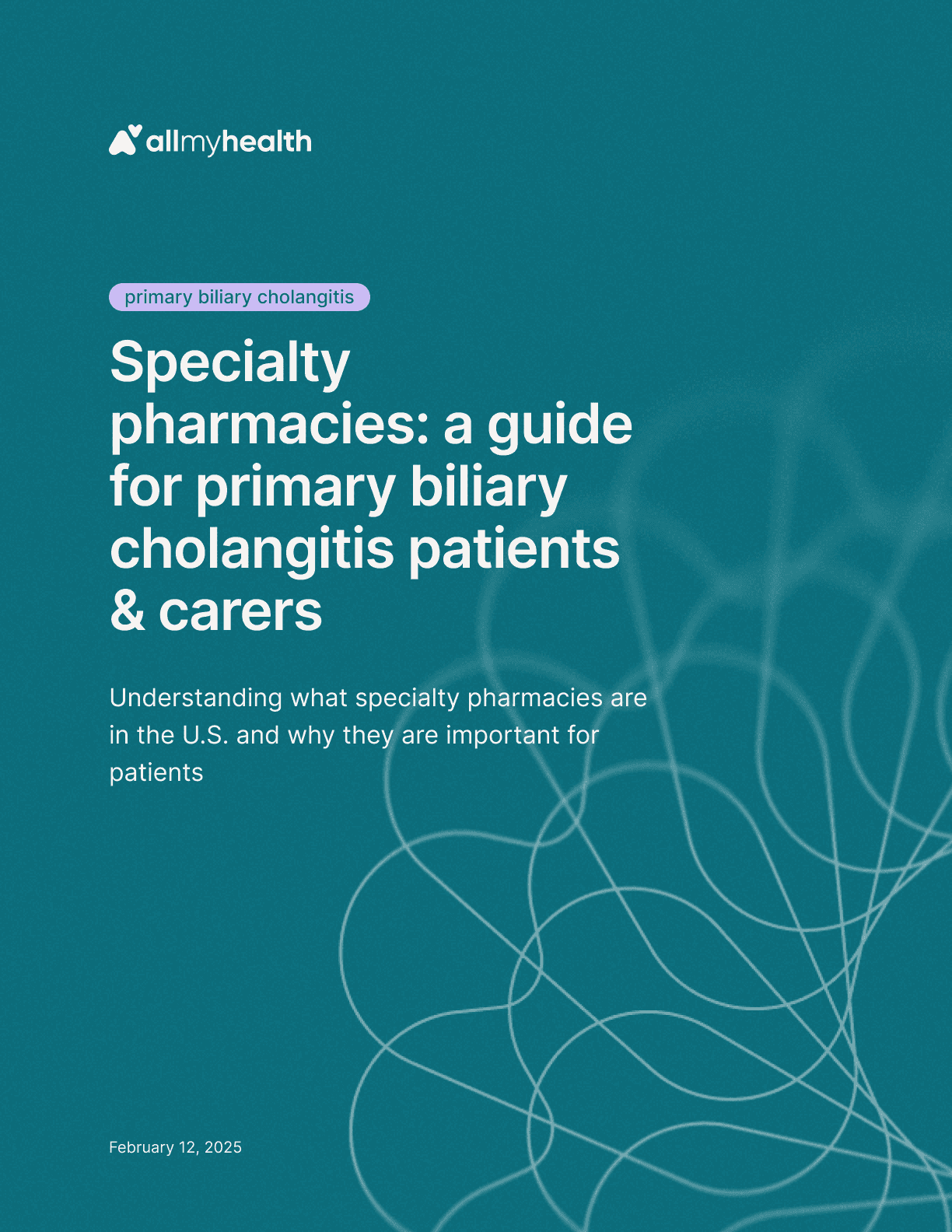
Primary biliary cholangitis
·
Specialty pharmacies: a guide for primary biliary cholangitis patients & carers
Feb 12, 2025
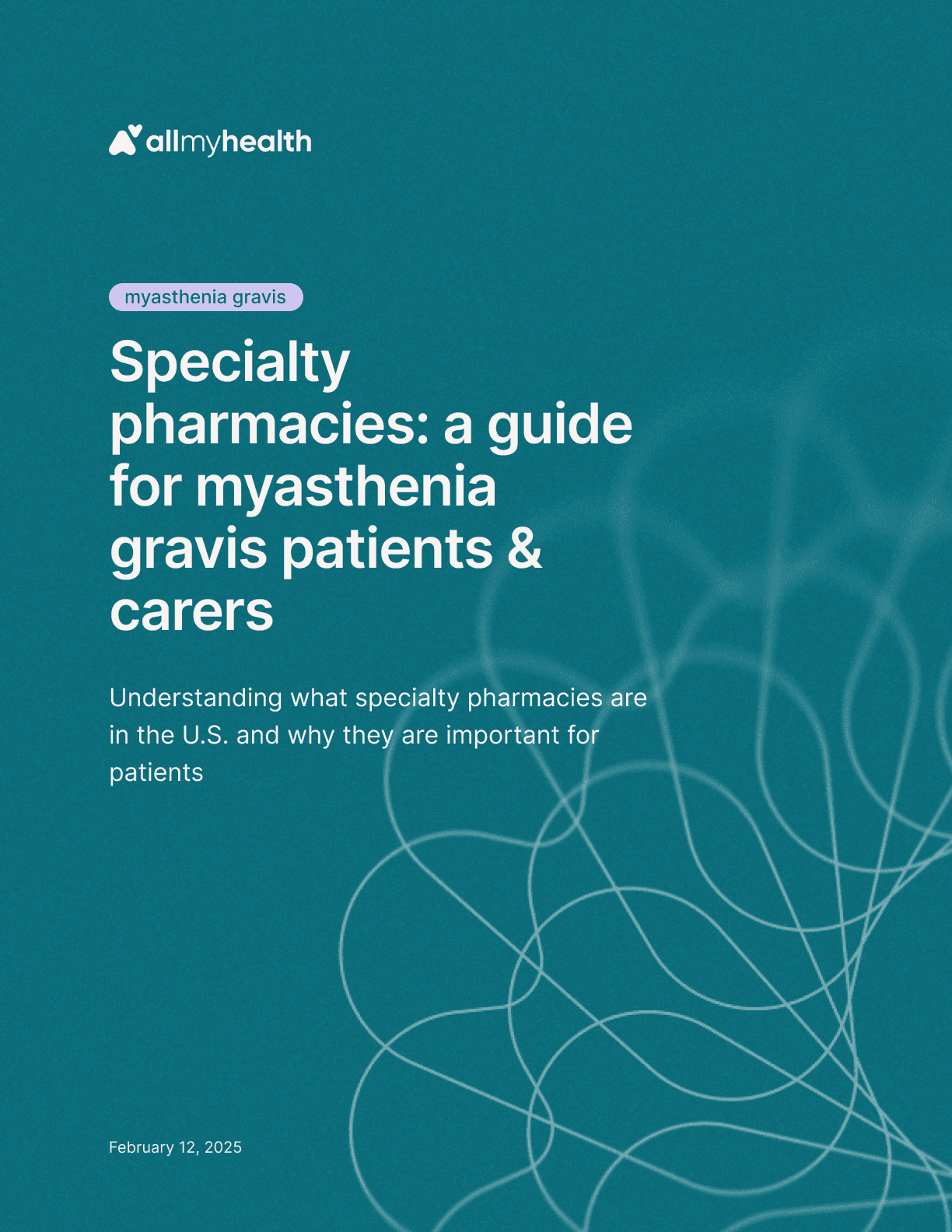
Myasthenia gravis
·
Specialty pharmacies: a guide for myasthenia gravis patients & carers
Feb 12, 2025
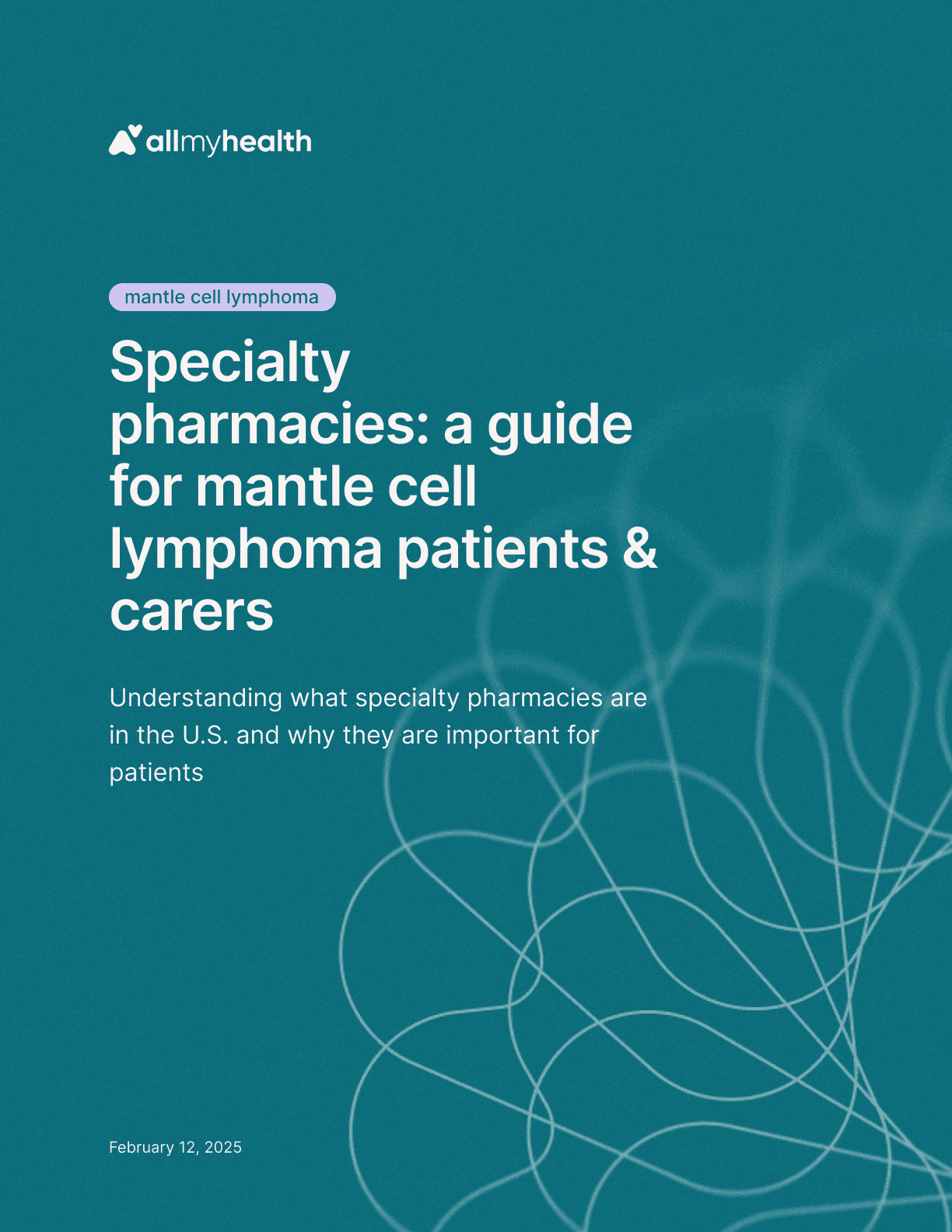
Mantle cell lymphoma
·
Specialty pharmacies: a guide for mantle cell lymphoma patients & carers
Feb 12, 2025

Friedreich's ataxia
·
Specialty pharmacies: a guide for Friedreich’s ataxia patients & carers
Feb 12, 2025

Duchenne muscular dystrophy
·
Specialty pharmacies: a guide for Duchenne muscular dystrophy patients & carers
Feb 12, 2025

Spinal muscular atrophy
·
Specialty pharmacies: a guide for SMA patients & carers
Feb 6, 2025
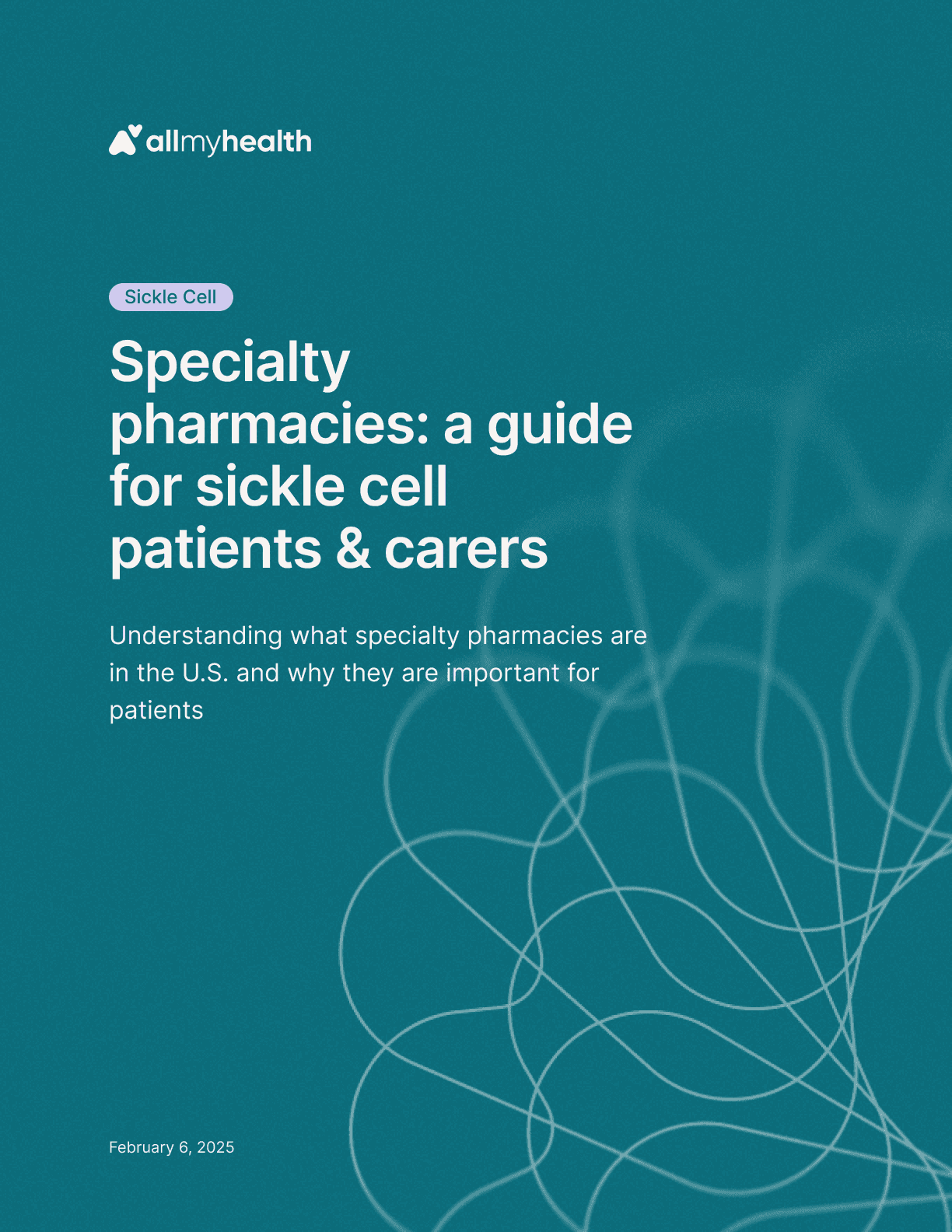
Sickle cell
·
Specialty pharmacies: a guide for sickle cell patients & carers
Feb 6, 2025
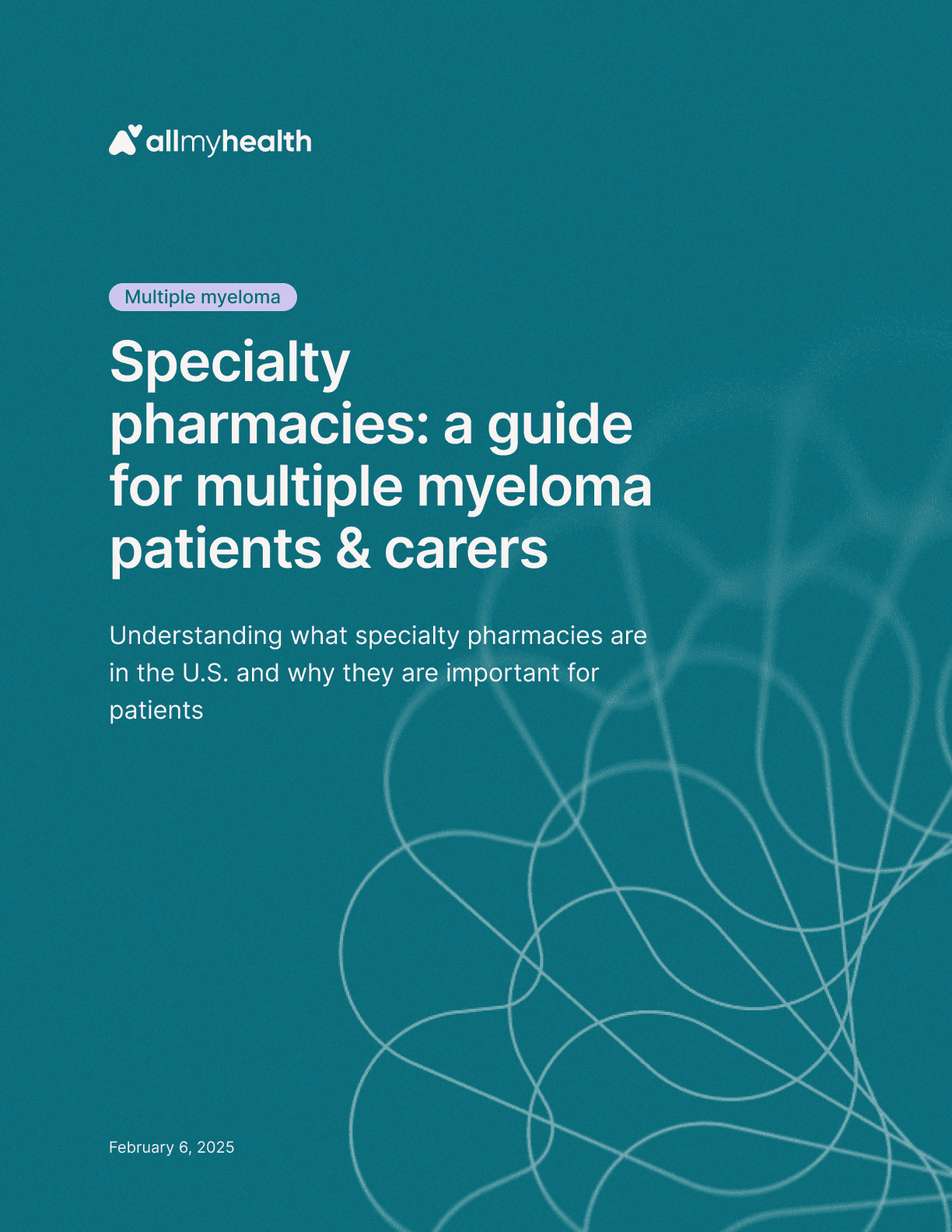
Multiple myeloma
·
Specialty pharmacies: a guide for multiple myeloma patients & carers
Feb 6, 2025
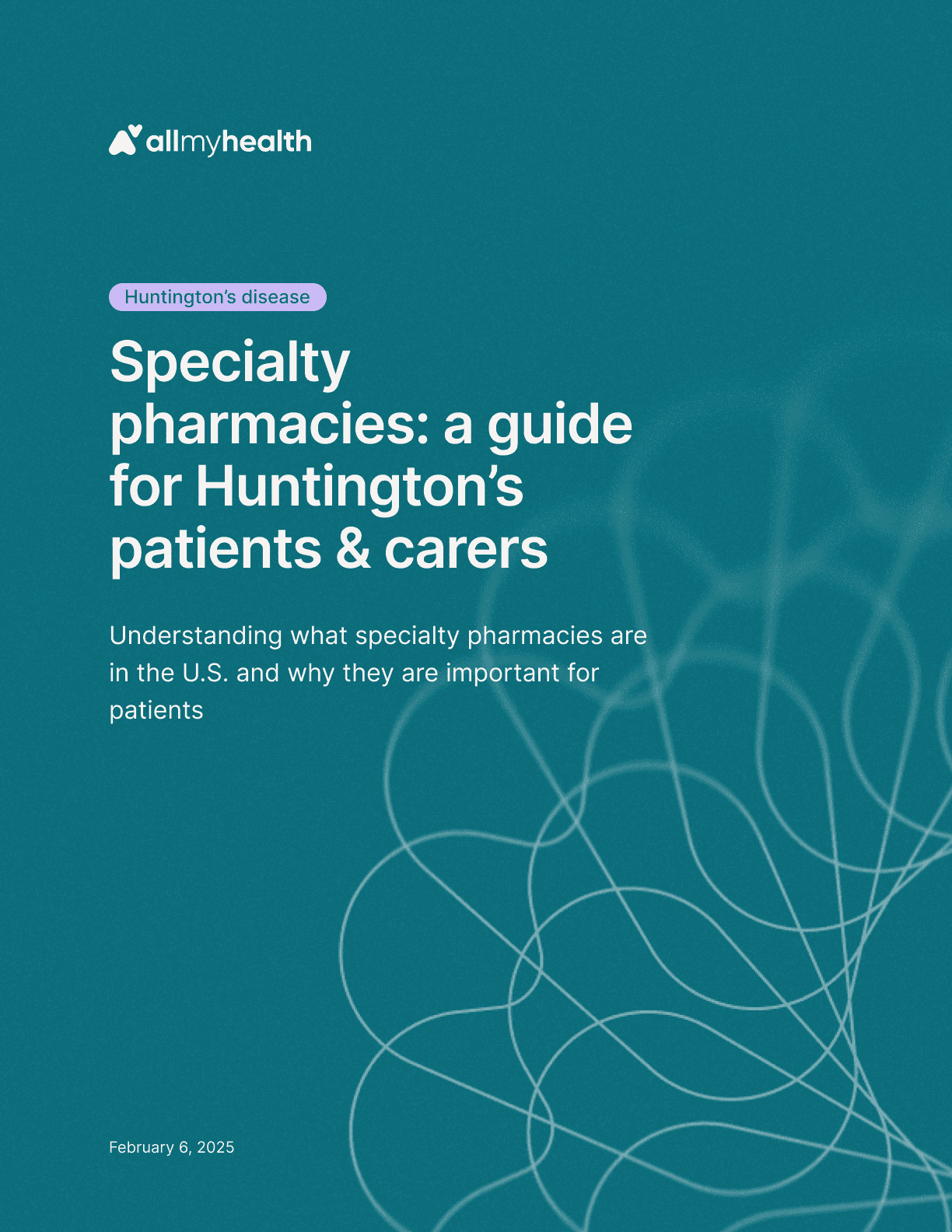
Huntington's disease
·
Specialty pharmacies: a guide for Huntington’s disease patients & carers
Feb 6, 2025
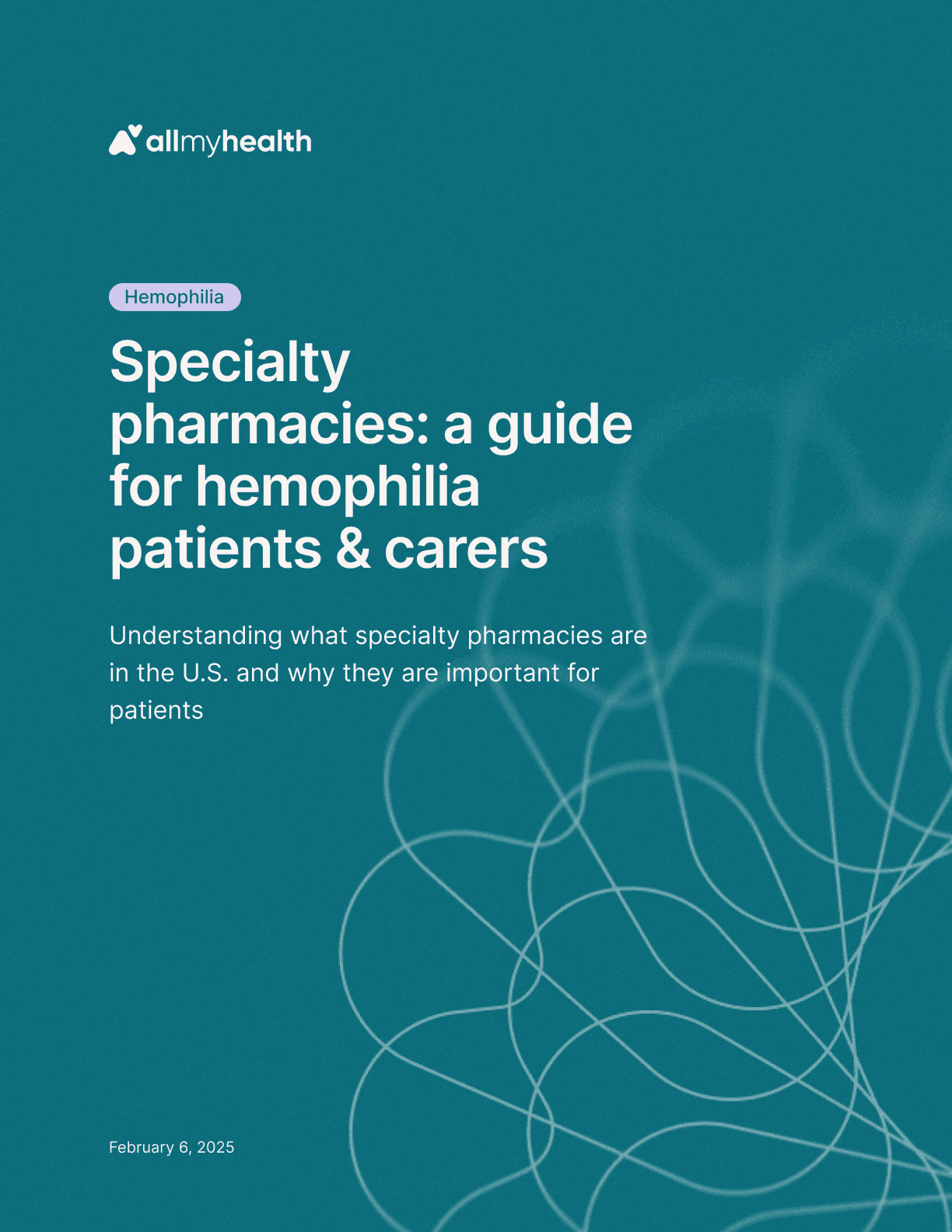
Hemophilia
·
Specialty pharmacies: a guide for hemophilia patients & carers
Feb 6, 2025

Amyotrophic lateral sclerosis
·
Specialty pharmacies: a guide for ALS patients & carers
Feb 6, 2025

Duchenne muscular dystrophy
·
Understanding Duchenne muscular dystrophy: a guide for patients
Jan 30, 2025

Friedreich's ataxia
·
Understanding Friedreich's ataxia: a guide for patients
Jan 30, 2025

Hemophilia
·
Understanding hemophilia: a guide for patients
Jan 30, 2025
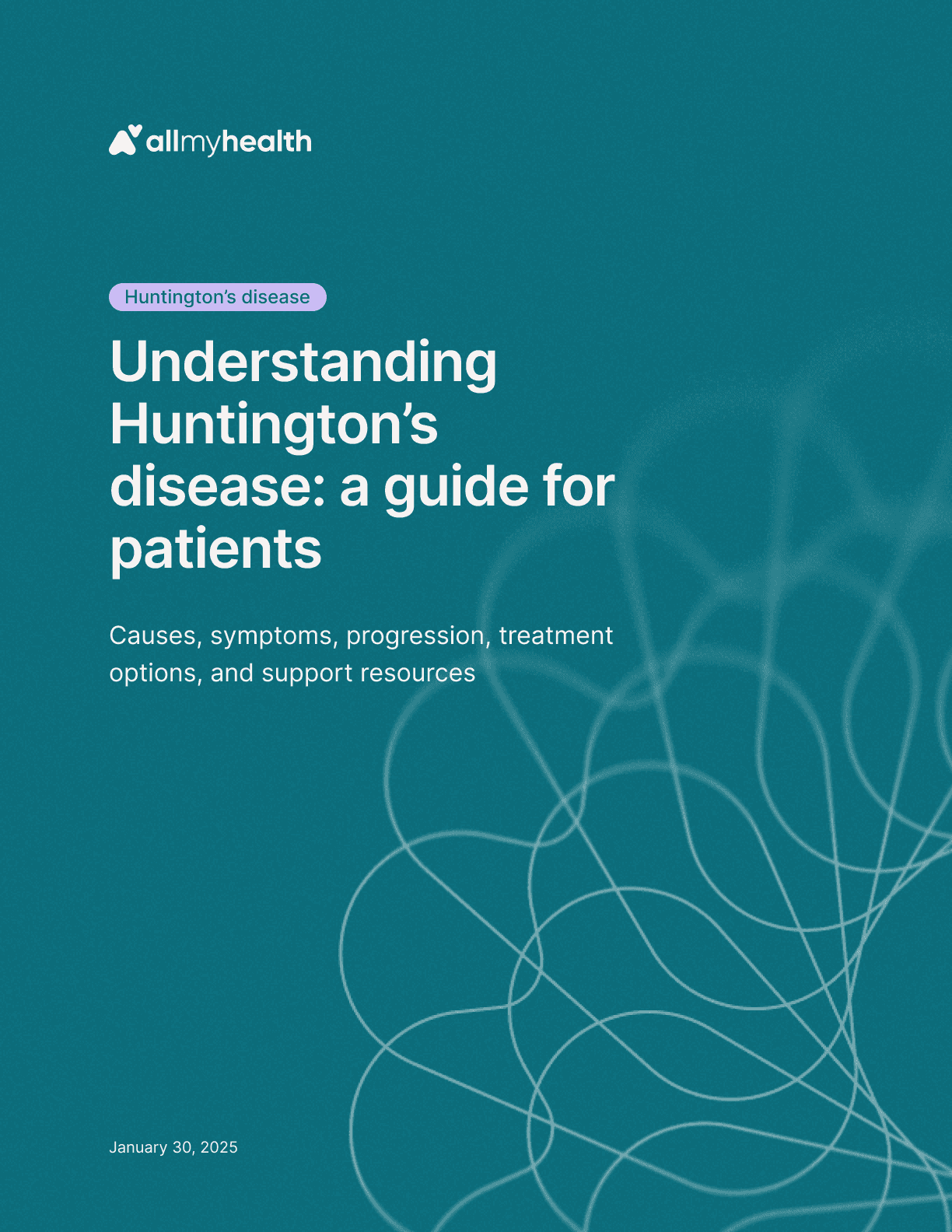
Huntington's disease
·
Understanding Huntington’s disease: a guide for patients
Jan 30, 2025

Primary biliary cholangitis
·
Understanding primary biliary cholangitis: a guide for patients
Jan 30, 2025
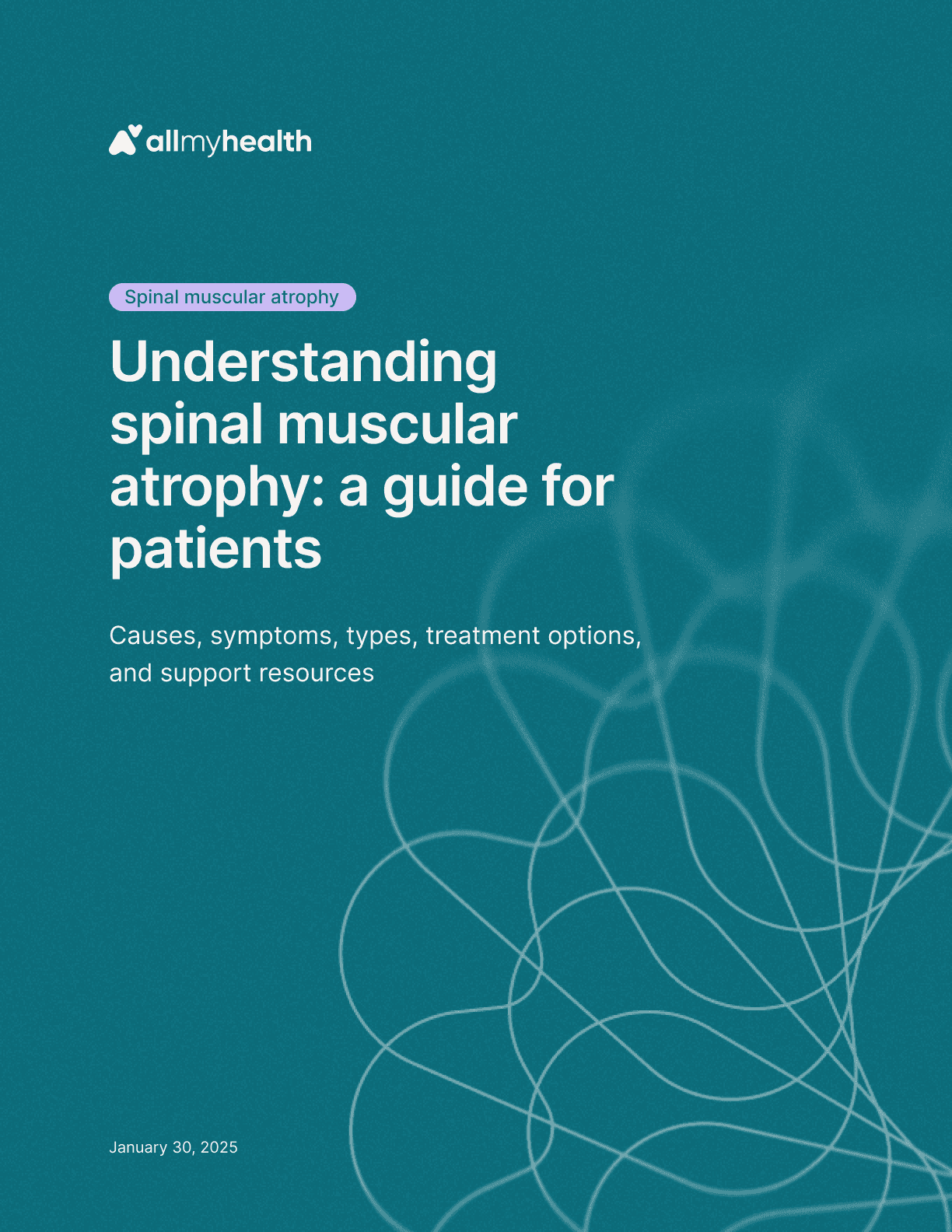
Spinal muscular atrophy
·
Understanding spinal muscular atrophy: a guide for patients
Jan 30, 2025

Amyotrophic lateral sclerosis
·
Understanding amyotrophic lateral sclerosis: a guide for patients
Jan 23, 2025
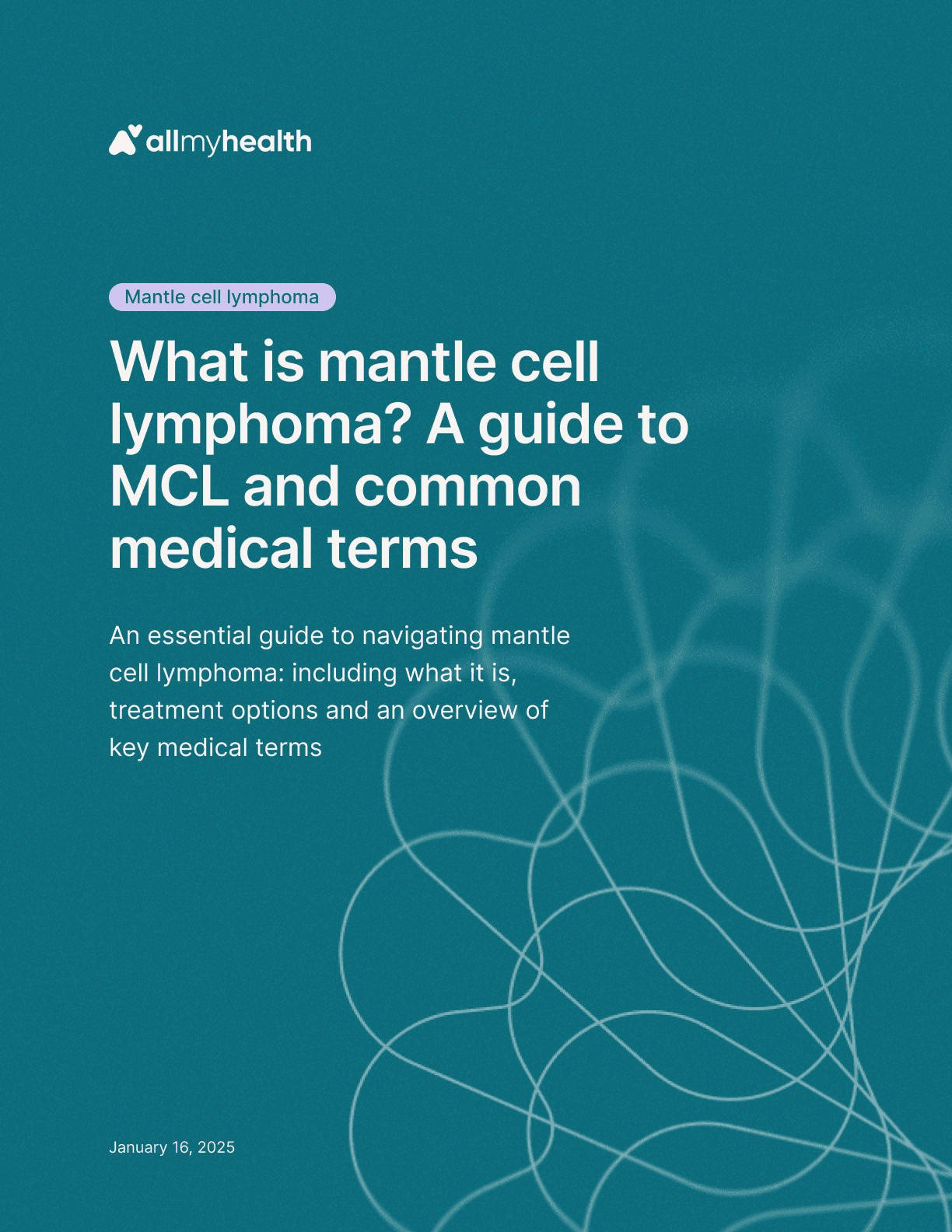
Mantle cell lymphoma
·
What is mantle cell lymphoma? A guide to MCL and common medical terms
Jan 23, 2025
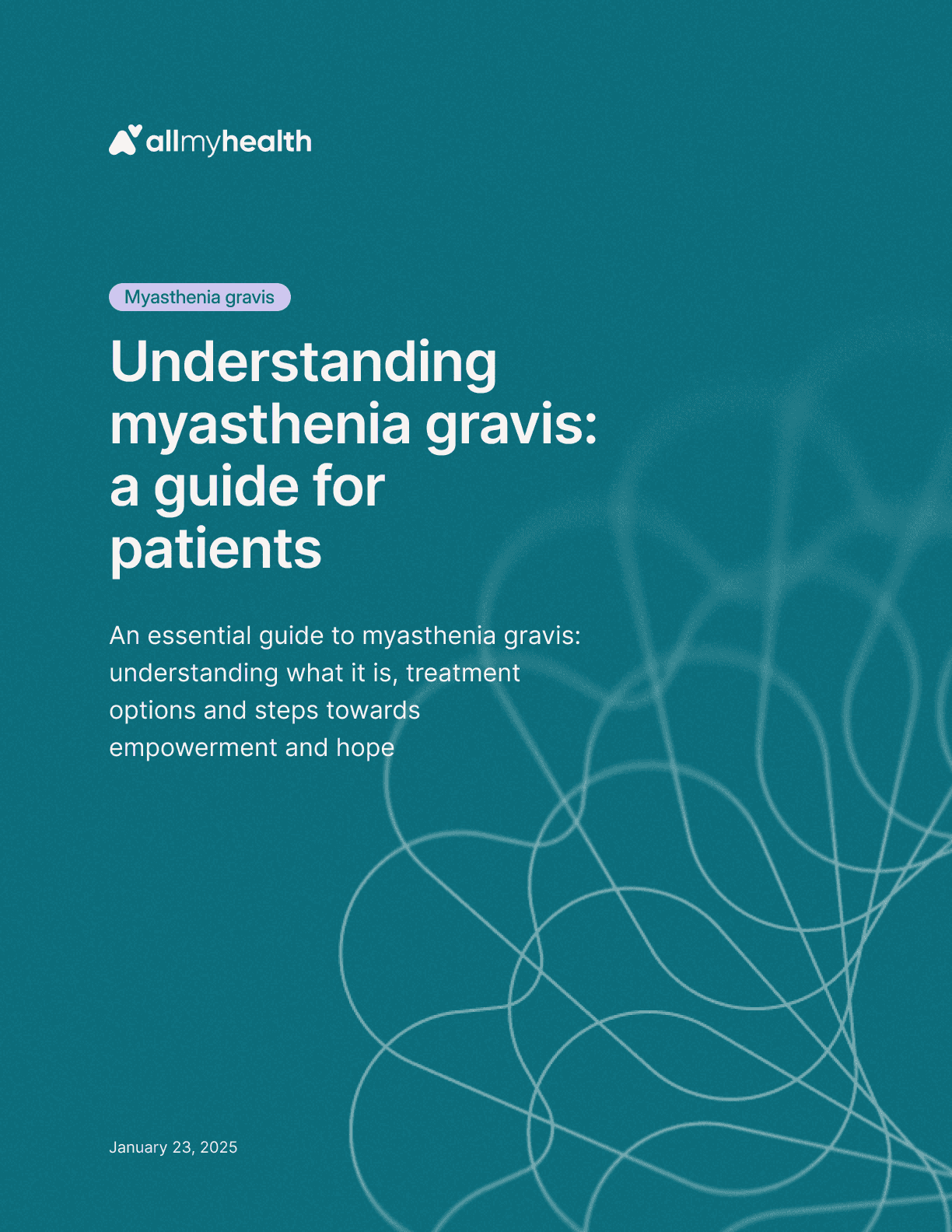
Myasthenia gravis
·
Understanding myasthenia gravis: a guide for patients
Jan 23, 2025
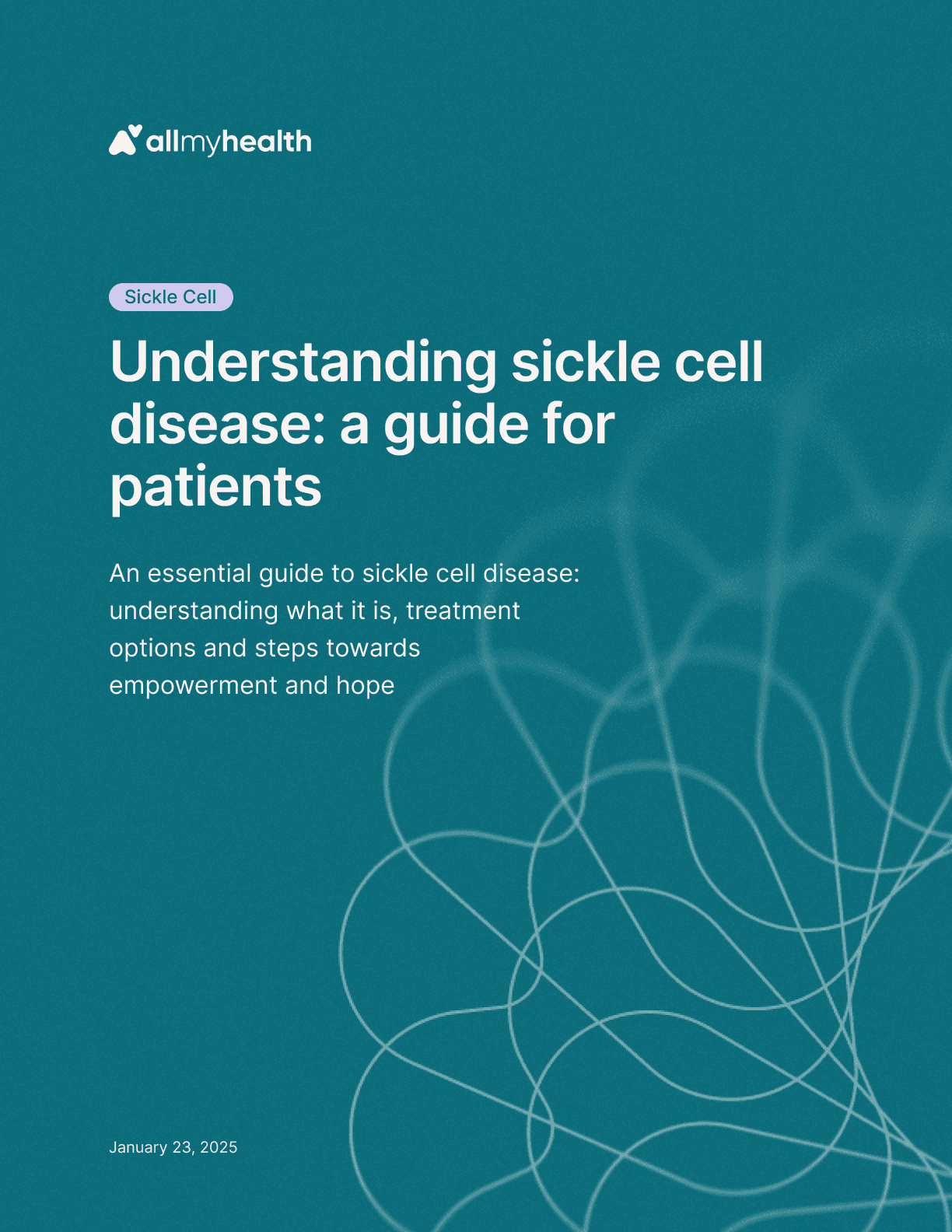
Sickle cell
·
Understanding sickle cell disease: a guide for patients
Jan 23, 2025

Primary biliary cholangitis
·
Exploring financial assistance options for primary biliary cholangitis treatment in the U.S.
Jan 17, 2025
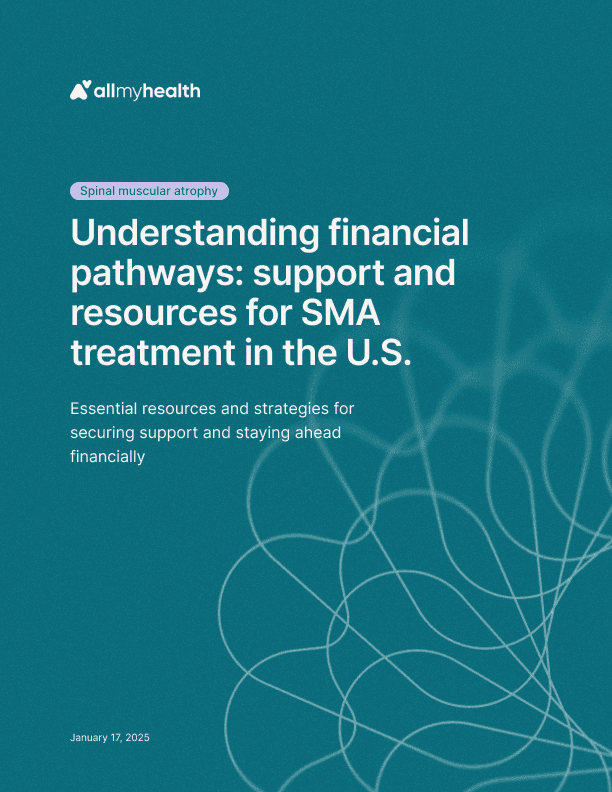
Spinal muscular atrophy
·
Understanding financial pathways: support and resources for SMA treatment in the U.S.
Jan 17, 2025

Duchenne muscular dystrophy
·
Financial strategies for muscular dystrophy in the U.S.
Jan 17, 2025

Hemophilia
·
Navigating financial assistance for hemophilia treatment in the U.S.
Jan 17, 2025
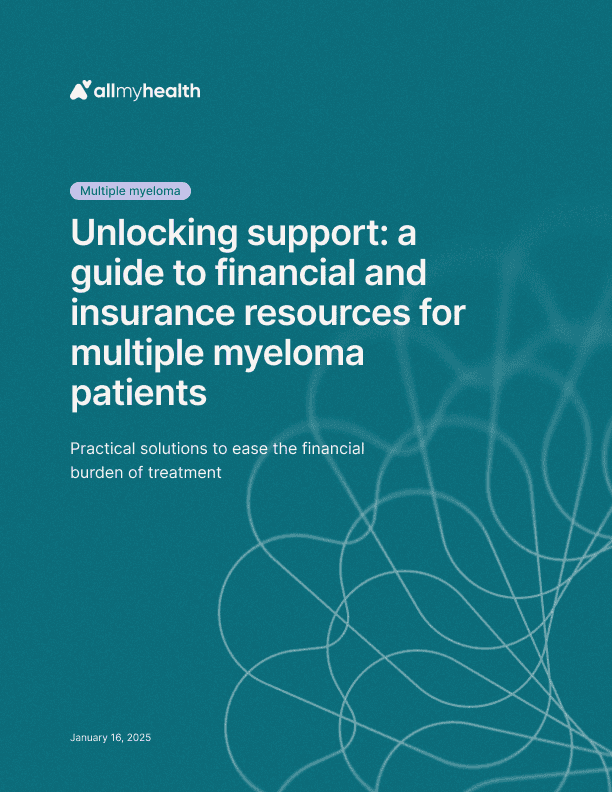
Multiple myeloma
·
Unlocking support: a guide to financial and insurance resources for multiple myeloma patients
Jan 17, 2025

Friedreich's ataxia
·
Navigating Friedreich’s ataxia in the U.S.: a practical guide to support and financial planning
Jan 17, 2025
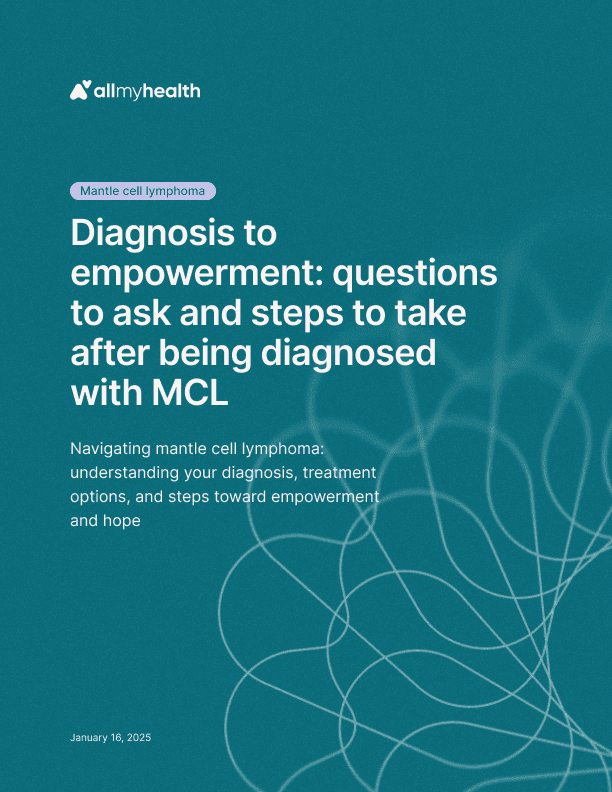
Mantle cell lymphoma
·
Diagnosis to empowerment: questions to ask and steps to take after being diagnosed with MCL
Jan 16, 2025
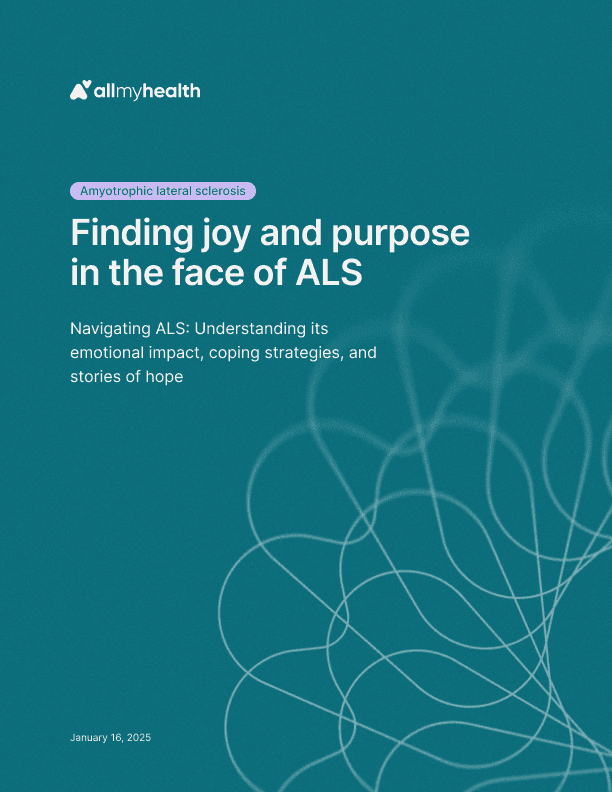
Amyotrophic lateral sclerosis
·
Finding joy and purpose in the face of ALS
Jan 16, 2025

Sickle cell
·
Thriving through the challenges: tips for managing school, work, and family with sickle cell disease
Jan 16, 2025

Myasthenia gravis
·
Financial strategies for living with myasthenia gravis in the U.S.: a guide to long-term planning
Jan 16, 2025